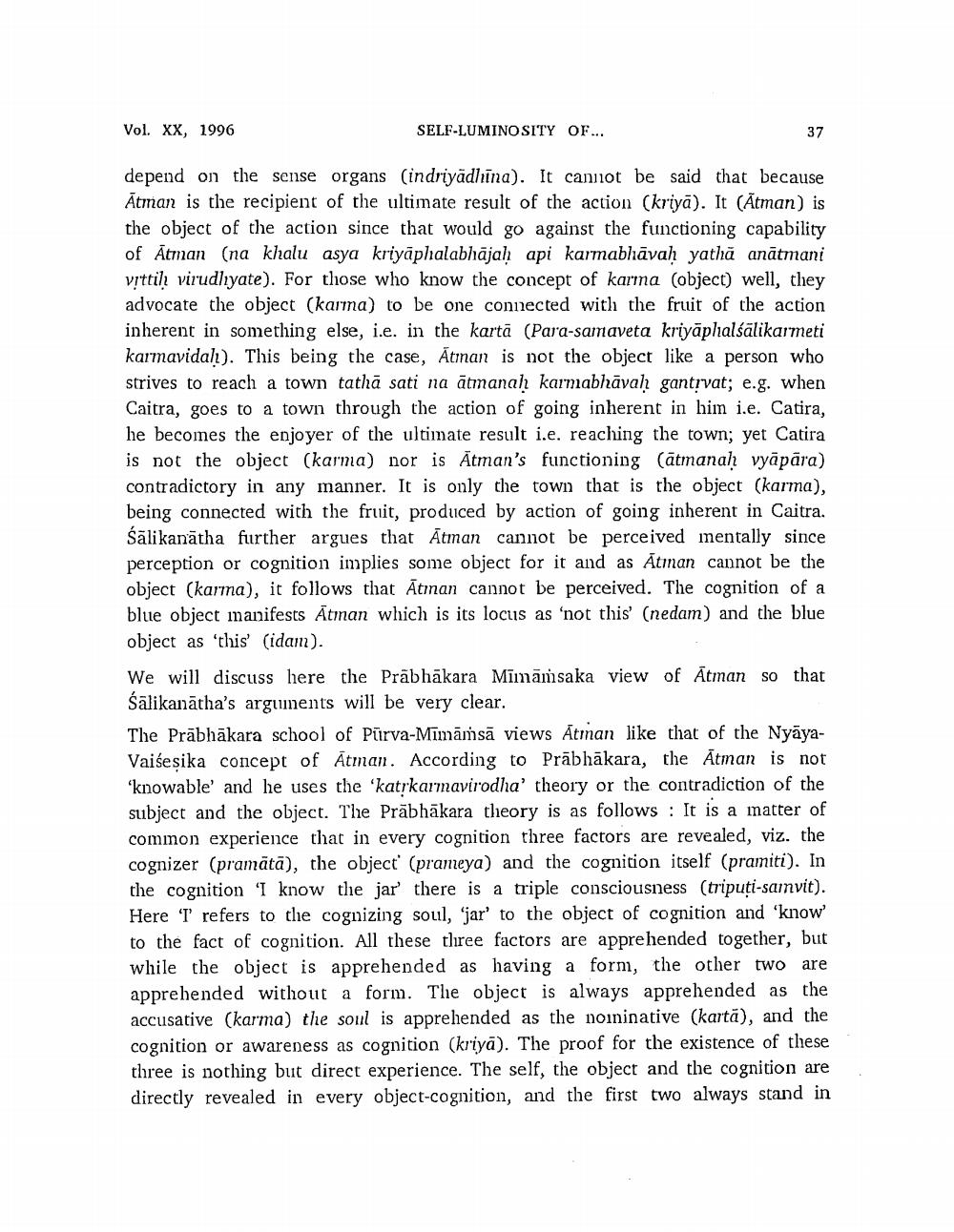________________
Vol. XX, 1996
SELF-LUMINOSITY OF...
depend on the sense organs (indriyādlīna). It cannot be said that because Ātman is the recipient of the ultimate result of the action (kriyā). It (Ātman) is the object of the action since that would go against the functioning capability of Atman (na khalu asya kriyāphalabhājah api karmabhāvah yathă anātmani vittih virudlıyate). For those who know the concept of karma (object) well, they advocate the object (karta) to be one connected with the fruit of the action inherent in something else, i.e. in the kartā (Para-samaveta kriyāplialśālikarmeti karmavidalı). This being the case, Atinan is not the object like a person who strives to reach a town tathā sati na ātmanah karmabhāvah gant;vat; e.g. when Caitra, goes to a town through the action of going inherent in him i.e. Catira, he becomes the enjoyer of the ultimate result i.e. reaching the town; yet Catira is not the object (karma) nor is Ātman's functioning (ātmanah vyāpāra) contradictory in any manner. It is only the town that is the object (karma), being connected with the fruit, produced by action of going inherent in Caitra. Śālikanātha further argues that Ātman cannot be perceived mentally since perception or cognition implies some object for it and as Atman cannot be the object (karma), it follows that Ātman cannot be perceived. The cognition of a blue object manifests Ātman which is its locus as 'not this' (nedam) and the blue object as 'this idam). We will discuss here the Prābhākara Mīmāmsaka view of Atman so that Šalikanātha's arguments will be very clear. The Prābhākara school of Purva-Mīmāṁsā views Atman like that of the NyāyaVaiseșika concept of Ātman. According to Prābhākara, the Ātman is not knowable and he uses the 'katrkarmavirodha' theory or the contradiction of the subject and the object. The Prābhākara theory is as follows : It is a matter of common experience that in every cognition three factors are revealed, viz. the cognizer (pramātā), the object' (prameya) and the cognition itself (pramiti). In the cognition 'I know the jar there is a triple consciousness (tripuți-sainvit). Here 'T' refers to the cognizing soul, 'jar' to the object of cognition and know' to the fact of cognition. All these three factors are apprehended together, but while the object is apprehended as having a form, the other two are apprehended without a form. The object is always apprehended as the accusative (karma) the soul is apprehended as the noininative (kartā), and the cognition or awareness as cognition (kriyā). The proof for the existence of these three is nothing but direct experience. The self, the object and the cognition are directly revealed in every object-cognition, and the first two always stand in




